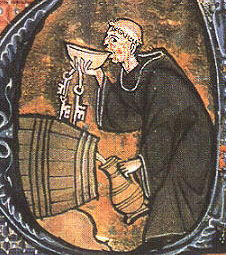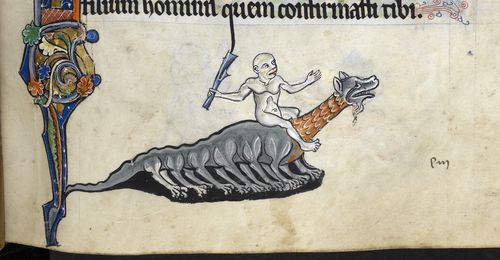
St Foy (Sancta Fides, Saint Faith) was a virgin martyr from Agen killed in the persecution of Diocletian. In the 9th century her relics were stolen by a monk of the Abbey of Conques, who took them to his own monastery. Fame of the miracles wrought by St Foy there soon spread, and it became a popular place of pilgrimage. A compilation of stories about these miracles was written in the 11th century under the title Liber miraculorum sancte Fidis. The following story, which raises interesting questions about lay participation in monastic masses, is taken therefrom:
A warrior from the Auvergne named Bernard, who was melancholy after losing all his hair, received a night vision from Foy, who told him:
“Do not delay to go confidently to the monastery at Conques. When you have arrived, make known to Abbot Girbert in my name that in my memory he should celebrate the divine mystery before the shrine of my body, while you stand on his left until the reading of the holy Gospel has been completed. After the offertory, when the abbot has washed his hands, collect that water. He should moisten your head, and after that you must go over to the right side of the altar” (3.7).
When Abbot Girbert is told about the vision “point by point,” he,
“as is usually the case with spiritually advanced persons, immediately protested that he was not worthy of being involved in such a business. His resistance was finally overcome by their urgent pleas and he devoutly carried out everything he had been directed to do. The following night while Bernard was keeping vigil in holy prayers before the holy virgin’s mortal remains, his scalp seemed to swell with little hairs, like the head of a newborn boy” (3.7).
(Translation from “Liturgy as Social Performance” by C. Clifford Flanigan, Kathleen Ashley, and Pamela Sheingorn, in The Liturgy of the Medieval Church, ed. by Thomas J. Heffernan and E. Ann Matter, p. 644.)


